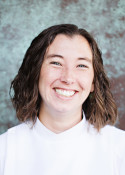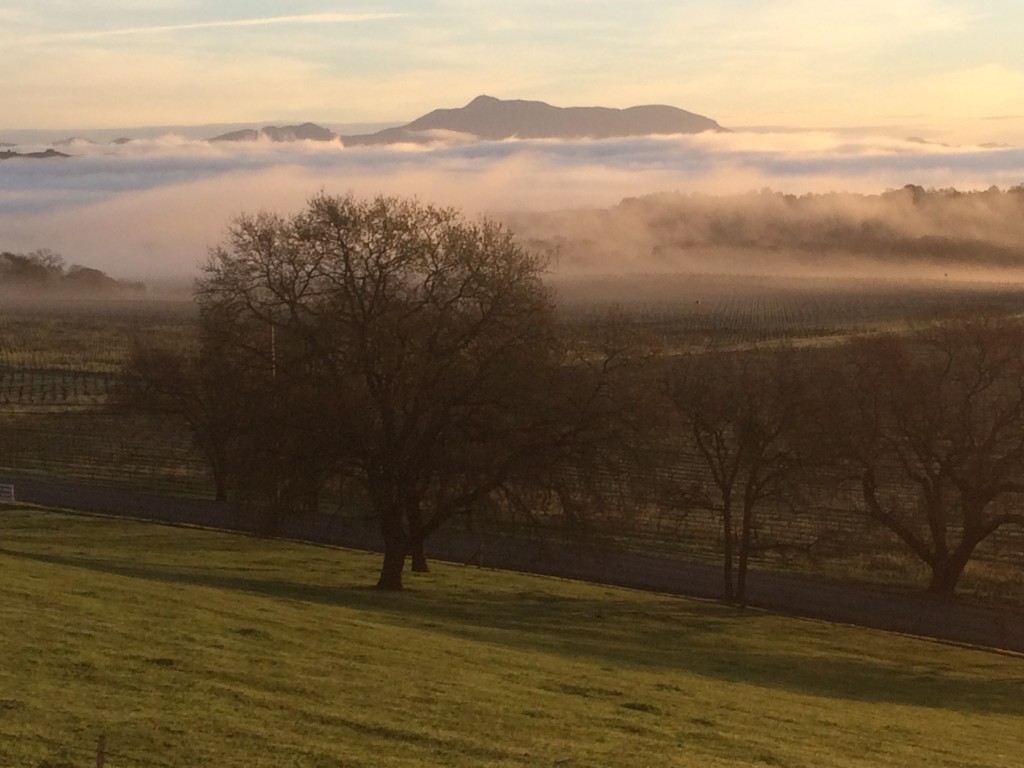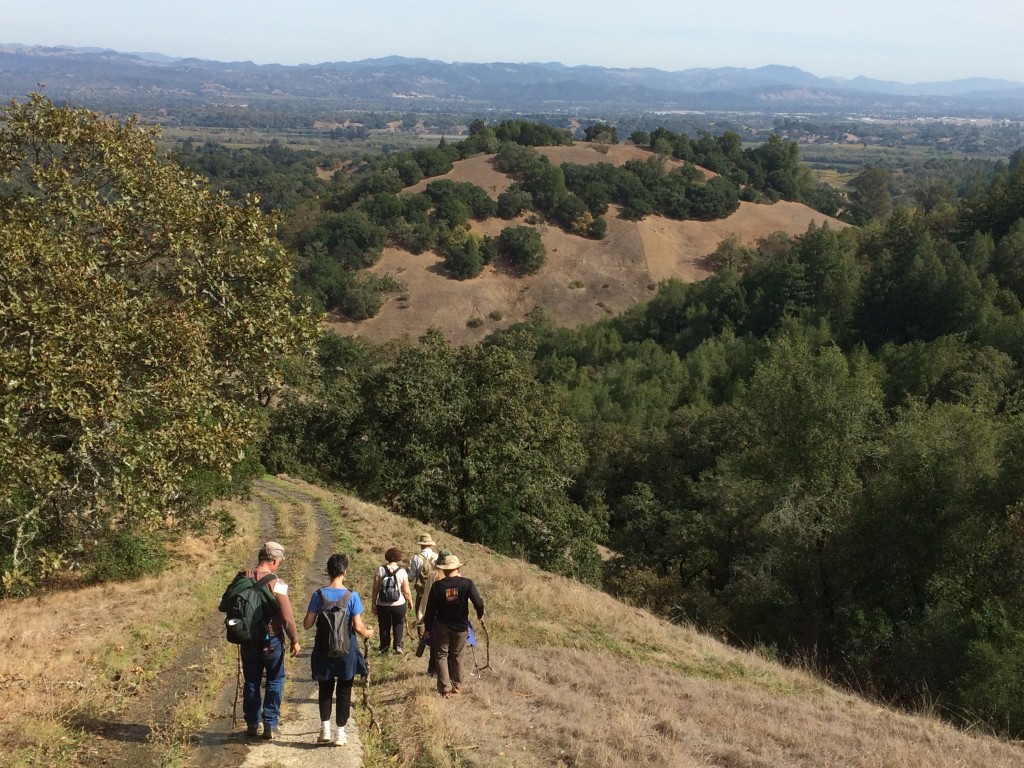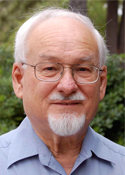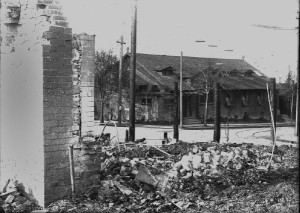From the Associate Rector
Moving Mountains with Mustard Seeds
I have often puzzled at Jesus’ teaching in the Gospel of Matthew that “if you have faith the size of a mustard seed, you will say to this mountain, ‘Move from here to there,’ and it will move; and nothing will be impossible for you.” (Matthew 17:20) What would this faith look like today? How could we even measure faith? What mountains would we move together if we had that speck?
As I ran through the quiet streets of our North Berkeley hills yesterday morning, it hit me: mysterious as living this faith may be, we’re preparing to do just that at All Souls.
When we gather to make Eucharist on August 13th at 11:15 am, I expect that the Spirit will be blowing something fierce. That day, we will celebrate the baptisms of five babies and children — this alone is an overwhelming joy. And then, we will join in a rite of renaming and blessing for a beloved child of God who has come to know himself more fully and truly with a new name and gender.
In the midst of this celebration, I will turn to the whole gathered body and ask, “Will all you here present do all in your power to love and support this person in his newly revealed life in Christ?” In response, we will gather what faith we have and give voice to it in just two words: “We will.” I believe that these words can move mountains.
This renaming rite is grounded in one of our most fundamental beliefs: that all people bear the image of God. Every single person. We look back to the story of creation in Genesis 1:26, when “God said, ‘Let us make humankind in our image, according to our likeness.’” Humanity reflects the diversity of our God, and this is very good indeed. We bind ourselves to this truth in baptism, and each time we reaffirm our baptism, vowing to “respect the dignity of every human being,” and to “seek and serve Christ in all persons.” This commitment to look for the image of God in all people stands as the foundation for our common life as the Body of Christ.
This foundation is overlaid with our rich tradition of names being changed as the faithful follow God. Abraham and Sarah received new names as they listened to God’s call and journeyed into new lands. Jacob wrestled God’s angel through the night, and emerged with a blessing, and the new name of Israel. After much angst and pain, Saul heard God in a new way, changed course, and over time became known as Paul. Embracing revelation and leaning into new understandings of our identity as beloved of God is an age-old part of who we are as Christians.
Several months ago, this child asked me if we could celebrate his new name in church, and we have been dreaming and researching and writing since then. The Episcopal Church has a task force currently working to create a renaming rite, but it isn’t ready yet. So instead, I gathered resources and ideas from other Episcopal lay leaders and priests, Lutheran pastors, the Metropolitan Community Church, and Many Voices, A Black Church Movement for Gay & Transgender Justice. In the end, though, nothing quite fit our need here at All Souls, in particular because all of the rites I found were designed for adults. With this in mind, Phil and I set to work, and soon Bishop Marc joined us in a wonderfully creative and collaborative process. Bishop Marc’s wisdom, pastoral and liturgical gifts, and steady encouragement have all been great blessings in this journey.
Ultimately, we crafted a rite based off of A Form of Commitment to Christian Service, a flexible rite used for a variety of situations, found on page 420 of the Book of Common Prayer. We wanted to be clear that this is neither a rebaptism nor even a reaffirmation of baptism. We believe that God is present in baptism, and that one baptism seals us with Christ and with the whole Body of Christ, no matter how we may come to understand ourselves differently later in life. Further, even a reaffirmation of baptism seemed inappropriate, because this child has not strayed and returned to his faith, nor found a deeper or transformed faith. He has simply come to understand more fully who he is. We need to celebrate this transition with him, recognize him as who he truly is, and honor his full dignity and sanctity as a beloved child of God.
And thanks be to God, our primary leaders of the Episcopal Church are guiding us in this work with clarity and purpose. Writing to the whole church last summer in response to the so-called “bathroom bill” in North Carolina, the Most Rev. Michael Curry, Presiding Bishop of the Episcopal Church, and the Rev. Gay Clark Jennings, President of the House of Deputies, put it this way: “When we are born anew through baptism, we promise to respect the dignity of every human being. Today, transgender people and, indeed, the entire LGBT community, need us to keep that promise. By doing so, we can bear witness to the world that Jesus has shown us another way—the way of love.” Here is one chance for us to do just that.
Striving for justice and peace can seem to loom like an enormous challenge on the horizon. And yet, again, we hear Jesus insisting that with faith the size of a mustard seed, we can move mountains. Deep in my gut, I believe that this is one of those times. We don’t have to know how it works. But this is our faith, this is where we place our trust: that showing up and being the full body of Christ together changes the unfolding of life. It is a simple act that carries us across the threshold into the Realm of God. As hatred and fear swirl around our nation, now is the time when we come together. Now is the time when we rally, when we love, when we give ourselves over to a new vision. Just as God spoke goodness and light and life into being, we join God in creating with our words. It starts with just two, an audible mustard seed: a resounding “we will.”
And so, friends, I ask you to think on these two words, “we will.” Pray them, reflect on them, talk about them. What do you mean with these words? What action stands behind them? What support and love are we pledging? Pray these words in the coming days. Bring your questions to me and Phil if it’s helpful. And then come, ready to offer all your breath, all your voice, and all your support for this beloved child of God.
Will all of you do all in your power to love and support this person in his newly revealed life in Christ?
Let our response resound on August 13th and then reecho through our congregation, our community, our world. Let this be where we place our trust: that God is here, that the Spirit is blowing and leading, and that we will show up with our love and support. Mountains are already on the move.
Peace,
Liz+
An Invitation to the Parish Retreat
Come to the Ranch!
“Sit down, sit down,” said my soul. I sat down and was made whole.
A regular worshipper at St. George’s Chapel wrote this poem in response to the invitation of an Adirondack chair and a stunning view across the valley. At the Ranch we can leave the stress and anxieties of daily life behind and participate in quiet, stillness, and silence.
We long for renewal.
We come to the Bishop’s Ranch for the renewal of the life-force energy that sustains us all, that creative spirit, that sense of connection. After we arrive and have settled in, we can be more attentive to our surroundings.
“There is no quiet place in the white man’s cities. No place to hear the unfurling of leaves in spring or the rustle of an insect’s wings. What is there to life, if man cannot hear the lonely cry of the [red-tailed hawk] or the [songs] of frogs around a pond at night?” (attributed to Chief Seattle, 1854)
The Bishop’s Ranch is not only a beautiful, welcoming place but also sits in a time apart, suggested The Rev. Pat Moore, Ranch chaplain. When we are fully present and can live in creation, she observed, we entrust ourselves to God’s creativity. We can give thanks for the gift of life; for remembering who [and whose] we are; for rest; for listening; for reflecting; for simply being. We can make room for Sabbath time in our daily living.
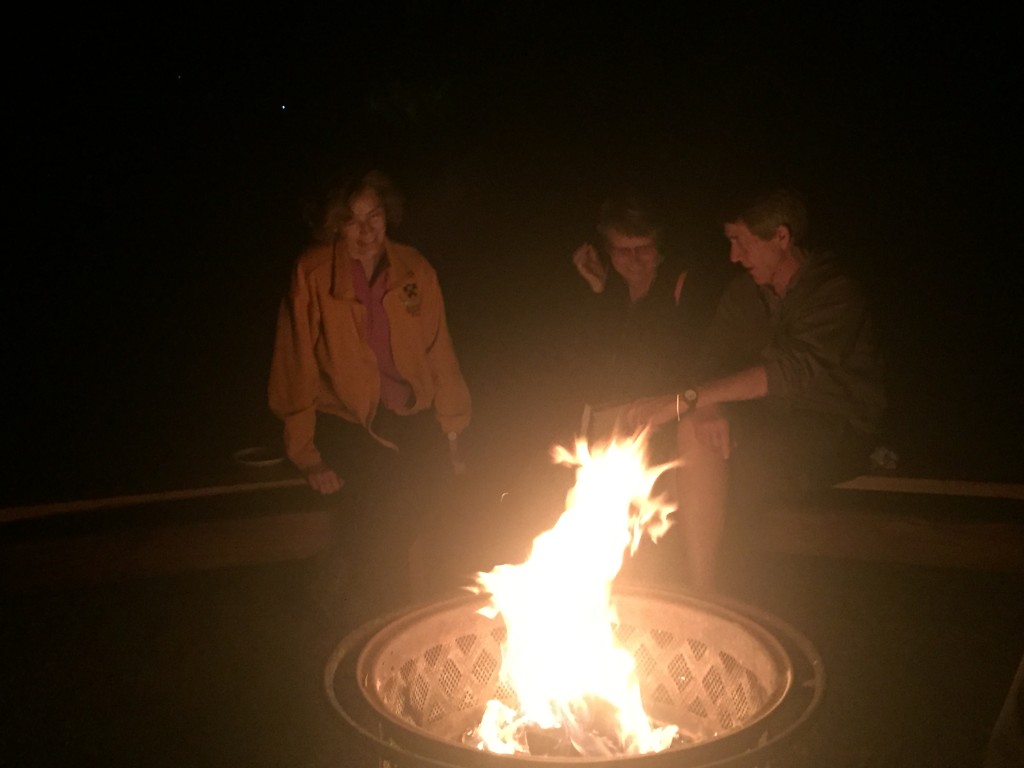
We long for uncomplicated life.
The Ranch is simple, without clutter. Everything has a place, from the peppermint soap and fan-folded washcloth to the Holsteins in the field to the bright stars at night. Grasses undulate along the trail and raptors soar on a thermal. In Winter one can blissfully spend an entire morning just listening to the rain.
We long for a sense of connection in community.
As we learned in the Book of Joy this summer, “we depend on the other in order for us to be fully who we are. The concept of Ubuntu is: a person is a person through other persons.” At the Ranch we can let the sense of our own importance go – what I want; what I believe – and shift our focus to another. We can practice compassion and generosity of spirit through living together. Genuine friendship, we can discover, is based entirely on trust. When we see how little we actually require – love and connection – material things no longer become the focus of our obsession. All we need is here.
Come to the Ranch. Come for renewal, simplicity, and connection.
– Caroline Putnam
Ready to come to the Ranch? Sign up for our Parish Retreat!
The 2017 Parish Retreat will take place at the Bishop’s Ranch in Healdsburg September 15-17, and the theme this year is Heaven. Our annual retreat is a special time for community building, spiritual growth and exploration. This inter-generational event includes activities for children, youth, families, and adults of all ages. In addition to the program of the retreat, the weekend includes free time for reflection, rest, adventuring and fun. More details and online registration are now available online here. You can also sign up with Emily Hansen Curran on Sunday mornings.
From the Associate for Music
Rounds in the Round
Moving the church into what we simply call “the round” for the summer has a number of benefits, including the opportunity to experience worship in spatially novel ways. As June 11 approached, I realized that one way our music-making could take advantage of the changed setup would be to sing in canon. In this procedure, the same melody is begun at different times by several individuals or groups, producing a sort of layering effect (some pieces for which this procedure can be used are commony called “rounds”). Dividing the congregation into sectors would allow the staggered entries to proceed around the church in a circular path, creating what I hoped would be a striking sonic effect. The desire was to provoke an experience not unlike that described by St. Ambrose, who famously compared the sounds of congregational prayer and song to that of waves (Hexameron III.5). So far this summer we have twice sung the Gradual psalm in a canonic version (on June 25 and July 23), and now I’d like to tell you more about my journey to the final product.
However exciting in the abstract, the idea of singing “rounds in the round” needed to be implemented with (a) particular piece(s), and no easy options immediately presented themselves. There were two challenges. First, our liturgical music serves liturgical functions, and as such is never an anything-goes affair. Our practice at All Souls is to think of each piece of music not as a concert but as a way of holding liturgical space, and I knew it was possible that for several reasons singing a canon would hold some spaces better than others. Second, most tunes are not made to fold back on themselves with the melodic layering that a canon involves, and eventually produce unpleasant dissonances if sung in such a manner. Those tunes that do work as canons comprise a very small portion of the repertoire and musical traditions of the Episcopal Church.
But I did know that there was a very singable canonic tune by the sixteenth-century composer Thomas Tallis already in our hymnal (the Eighth Tune, found at hymn 25). The question was how best to use it in worship. Fortunately, one important feature of the tune gave me direction: it was in the so-called “Long Meter,” meaning that it would fit with poetic texts of eight syllables per line and four lines per stanza. This pointed me toward the psalter. One of the lesser-known facts about the history of congregational hymn-singing in English-speaking churches is that it developed out of the sixteenth-century practice of singing metrical paraphrases of the psalms in particular (“metrical” here means having a pattern of the number of syllables per line that remains unchanged from one stanza to the next). This led to the publication of numerous collections of these metrical versions of the psalm texts, many of which were printed without any musical notation at all: the whole point was that the metrical versions of the psalms could in theory be used with any tune was commonly known and that matched the meter of the paraphrase.
This fundamental flexibility continues to allow so many different combinations of texts and tunes in Christian hymnody, and, I expected, would enable me to find metrical psalm paraphrases that worked with my chosen tune. The penultimate hurdle was that the lion’s share of these psalm paraphrases, from the 1540s to the present day, are in the so-called “Common Meter”—which features alternating line lengths of eight and six syllables—not the Long Meter of the canonic Tallis tune. But after a bit of searching the ever-reliable HathiTrust, an invaluable resource on which one can view and download thousands upon thousands of (mostly nineteenth-century) books, I stumbled across a metrical psalter published in 1845 that not only displayed a bias toward Long Meter but featured some pretty solid poetry (some metrical psalters are decried for the poor quality of their poetry).
With these pieces beginning to come together, I decided that the Gradual (which we include only at our 11:15 service) was the best moment in the liturgy to use a canonic metrical psalm. Gradual music is rather unique in our practice since it does not hold space for another liturgical action, such as a procession or the distribution of communion, and thus seemed a good opportunity to focus the full attention of every worshipper on what would be a new and potentially tricky musical procedure.
The final step was to identify which Sundays would be best for doing a canonic metrical psalm. This was a determination based in part on which psalms Spalding had translated well and could be modernized without disruption to the rhyme scheme (admittedly, I had to do some tinkering). The more important consideration, however, was which psalms appointed in the lectionary for our summer Sundays seemed to fit both the emotional atmosphere of the tune and the various meanings that can be associated with the musical procedure of canon. Since the tune itself felt to me tranquil but reflective, I leaned toward psalms of humility and searching. But the very structure of canon itself was also a point of departure: the slow multiplication of voices in canon could enhance the sense of petition that is prominent in many psalms, while those that identified God as leader seemed especially appropriate for a procedure in which the leading and following voices or groups are respectively termed dux (Latin for “leader”) and comes (Latin for“companion,” “partner,” or “servant”).
In the end, I did receive a good deal of positive feedback on these canonic psalms, and have been planning on doing one more before we move out of the round. Whether by text, tune, musical procedure, or some combination of the three, I hope that you have been and will be moved to contemplation!
– Jamie Apgar
FROM THE ARCHIVES
The Beginnings of All Souls: Chapter 8
Plans for a Parish House hit a pothole on Monday, September 17, 1923, when the combination of a spark, dry air and high winds spread a small fire that started in the vicinity of Shasta Road in the Berkeley hills and in rapid succession took destroyed or damaged houses in the sixty blocks north of the university campus, with some blocks being consumed in the matter of minutes. The day of great north Berkeley fire was also the day that the “Monday Club”, a gathering of all of the Berkeley Episcopal clergy, was meeting at All Souls. The meeting was adjourned when it had to be interrupted with the news that the houses on the other three corners of Cedar and Spruce were on fire.
The All Souls’ Servers’ Guild kept the chapel and chapter house roofs damp with wet blankets and gunny sacks using what little water they could find. The chapel filled with smoke, the altar brasses were removed, and Miss Kathleen Luke and her mother rescued as much of the choir library as they could carry. Everyone expected the chapel to burn, but when evening came the faithful parishioners found chapel and guild hall still standing. In the lobby, with a single candle in a bottle for light, Miss Josephine Stewart cheered the refugees and helped the commuters returning from San Francisco locate their families and temporary accommodations, never once letting on that she had lost her own house to the fire, along with 70 other parishioners.
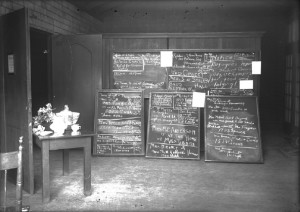
All Souls helps reunite families
The Rev. Dr. Trelease recalled some 20 years later, “Five hundred people were supplied with clothes from the skin out, through the untiring efforts of the people at All Souls. Subscriptions sent for the contemplated new parish house were returned by the vestry to all who had suffered loss by the fire, and I believe that every dime of that money came back when people got on their feet again.” The Rev. Dr. Trelease and his family also lost their house, the rectory, and lived in borrowed clothing for several weeks.
The Reverend William Power Clancey, rector of All Souls from All Souls Day 1972 to 1988, told the story of a parishioner who, fleeing the fire with her two children, took the ferry to San Francisco and went to her husband’s office, with children in tow, where she was greeted by her husband with the words: “Madam, I told you never to come to the City without your hat and gloves.”
– Thomas Burcham
CAMP ALL SOULS CELEBRATION DINNER
The whole parish is invited to join Camp All Souls for a potluck feast in celebration of these wonderful kids at the end of our week of camp: Friday, August 11th at 5:30 in the Sanctuary. The campers will have the chance to share their art and lead us all in some games and music. We will be making chili, and invite folks to bring salad, sides, bread and dessert to share. Camp is one way we build community and deepen our faith, and this evening will be a way for the kids to take the lead and give us a glimpse of their world. If you plan to come, please RSVP here.
Requiem FOR THE REV. CANON STEFANI SCHATZ
A requiem for the Rev. Canon Stefani Schatz will be celebrated at Grace Cathedral, San Francisco on Saturday, August 12 at 10 am. Canon Stefani served as the Diocese of California’s Canon to the Ordinary, working with Bishop Marc Andrus to support the vitality of its congregations and institutions. Stefani died on July 12 and is survived by several family members including her husband, the Rev. Joseph F. Duggan. Please help them honor and celebrate Stefani’s joyous spirit, deep wisdom, and heartfelt commitment to spreading Christ’s love.
O God of grace and glory, we remember before you this day our sister, Stefani. We thank you for giving her to us, her family and friends, to know and to love as a companion on our earthly pilgrimage. In your boundless compassion, console us who mourn. Give us faith to see in death the gate of eternal life, so that in quiet confidence we may continue our course on earth, until, by your call, we are reunited with those who have gone before; through Jesus Christ our Lord. Amen.
INTERFAITH IMMIGRATION VIGIL
Join us this Saturday, August 5th at 11:00 am at the West County Detention Facility in Richmond (5555 Giant Highway) for the monthly interfaith immigration vigil. We’ll gather with song, prayer, sacred story, and make our presence known as loudly as we can for our sisters and brothers being detained. Contact Margaret Sparks for carpooling information.
Camp Wise at St. Dorothy’s Rest, Camp Meeker

The 2017 summer camp season may be wrapping up at St. Dorothy’s Rest, but they’re not quite done! In September they will be hosting their first ever Camp Wise. Camp Wise invites seniors (ages 60 and up) to come and experience the highlights of St. Dorothy’s summer camp program. Campers will participate in a variety of activities including morning and evening chapel, arts & crafts, archery, drama, tea parties, canoeing, swimming, fishing, hiking, and much more!
When: Monday, September 11 to Thursday, September 14
Where: St. Dorothy’s Rest, 160 St. Dorothy Ave., Camp Meeker
Registration: Click here
Cost: $400 (scholarships available)
Other upcoming events at St. Dorothy’s Rest
Artists & Writers
September 1-4, Cost: $205-$235
Saturday Hikes
Saturdays, September 9, October 14, 1p.m. to 4 p.m.
Social Justice Film Festival: “13th” at Grace Cathedral

Where: Grace Cathedral, 1100 California St, San Francisco
Link: https://www.gracecathedral.org/events/social-justice-film-festival-13th/




